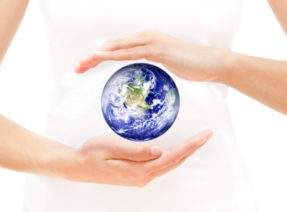
Womb Ones XX: Part 2
In the previous post, we began discussing the awe-inspiring honor of being born with female reproductive organs: the uterus, ovaries, and breasts. To underscore the magnificence of femininity in nurturing new life, we introduced the term “Womb Ones XX.”
Overcoming Societal Stigmas and Attitude Towards Women’s Bodies
Unfortunately, we have historically viewed this gift as a curse or hindrance, as we have lost reverence for the process that allows life to exist. While hormonal and neurotransmitter imbalances can cause discomfort, these issues can be resolved with herbal and nutraceutical therapies, lifestyle changes, and a proper diet. Our attitude toward these changes also plays a significant role in how we experience them. As Wayne Dyer said, “Change the way you think about things, and the things you think about change.”
Understanding the Ebb and Flow of Hormonal and Neurotransmitter Fluctuations
To improve our outlook on the physical and psychological changes that occur during the reproductive cycle, we must understand the ebb and flow of hormonal and neurotransmitter fluctuations that create the potential for fertility, birth, and nurturing life. This process is complex and involves an orchestration of various components that combine to make up the exquisite melody of the womb one.
Phases of the Womb Ones XX Reproductive Cycle
Let’s start with the brain since it triggers the reproductive cycle. The hypothalamus secretes gonadotropin-releasing hormone (GNRH), which signals the pituitary gland to release luteinizing hormone (LH) and follicle-stimulating hormone (FSH). These hormones stimulate the development of follicles (immature eggs or oocytes) in the ovaries, ultimately leading to menstruation.
The Follicular Phase, Ovulatory Phase, and Luteal Phase
The reproductive cycle lasts 24 to 35 days, with an average length of 28 days, divided into three phases. The follicular phase begins with menstrual flow and lasts around 13 days, during which the follicles develop in the ovaries. The remaining follicles recede, and only one will mature to become an ovum.
Estrogen secretion from the mature follicle increases until it reaches its peak, stimulating an LH surge and FSH release, marking the start of the ovulatory phase. LH triggers the release of the mature follicle, now an ovum, from the ovary to the fallopian tubes for potential fertilization. LH also stimulates the corpus luteum’s production from the ruptured mature follicle in the ovary. The luteal phase begins with ovulation and lasts for 14 days.
The Effects of Estrogen and Progesterone on Womb Ones XX
The corpus luteum primarily secretes progesterone and some estrogen, causing breast swelling and tenderness, thickening of the endometrial tissue with nutrients and fluids, and milk duct dilation. If the ovum is not fertilized, the corpus luteum degenerates, causing a gradual decline in estrogen and progesterone levels. The spiral arteries of the endometrial lining surface close off, and menstrual flow begins around day 26.
In the next article, we will explore the psychological and physical effects of estrogen and progesterone, as well as other hormones that influence this intricate process. Until then, try to visualize the changes occurring within your body and pinpoint where you are in your cycle. Appreciating these complexities can inspire reverence for the potential of new life and enhance your awareness.
NOTE: This information is for educational purposes only and is not intended as medical advice or a substitute for licensed medical care.



